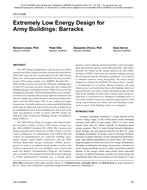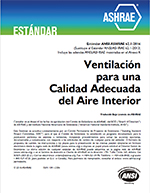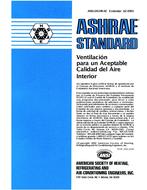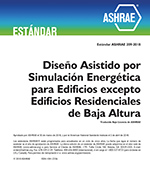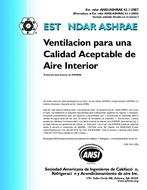Description
The 2007 Energy Independence and Security Act (EISA) require that all new federal facilities be built fossil fuel free by 2030. This raises the bar considerably from the 2005 Energy Policy Act, which required federal facilities be built to achieve at least 30% energy savings over ASHRAE Standard 90.1 – 2004. On the trajectory towards the 2030 goal, buildings have to meet 65% decrease of source energy from the Commercial Building Energy Consumption Survey (CBECS) survey for the building type specified. The EISA requirement is not a comparison between a baseline and an energy efficient simulation, but a direct comparison with the actual results from the final simulation with the EISA target. This is not a delta percentage comparison; it includes total source energy and all the building loads must be addressed and not left out of the calculation as an unregulated portion of the building load. The result of the study was guidance on how to reach a 60-80% energy use reduction from Commercial Building Energy Consumption Study (CBECS).
The 2005 Energy Policy Act requires that federal facilities be built to achieve at least a 30% energy savings over the 2004 ASHRAE Standard 90.1-2004. The Construction Engineering Research Laboratory (CERL) of the U.S. Army Corps of Engineers in collaboration with USACE HQ and Centers of Standardization for respective building types, subject matter expert (SME) contractors, and the DOE National Renewable Energy Laboratory (NREL) participated in a study to recommend design guides to achieve the Federal requirements for new buildings to be constructed under the Military Transformation Program. The building types included Unaccompanied Enlisted Personnel Housing or UEPH, administrative buildings (e.g., a brigade headquarters, and a company operation facility), a tactical equipment maintenance facility, and a dining facility. This paper presents the results of the energy analysis for the soldier barracks (UEPH). It provides the baseline building selected for the analysis and the modeling assumptions. As a result of a computer analysis using EnergyPlus, the target energy budgets are defined for all DOE 15 Climate Zones. Finally, a recommended set of energy efficient solutions for each climate zone is presented that shows the buildings limit as it approached net zero ready. It shows potential energy savings both on the building site and source energy when energy use reduction is considered on a building-by-building basis. It also shows further energy use reduction opportunities when energy improvements are made with each building considered as a part of the building cluster or community.
Citation: ASHRAE Transactions, Volulme 118, Part 1, Chicago, IL
Product Details
- Published:
- 2012
- Number of Pages:
- 23
- File Size:
- 1 file , 2 MB
- Product Code(s):
- D-CH-12-008
